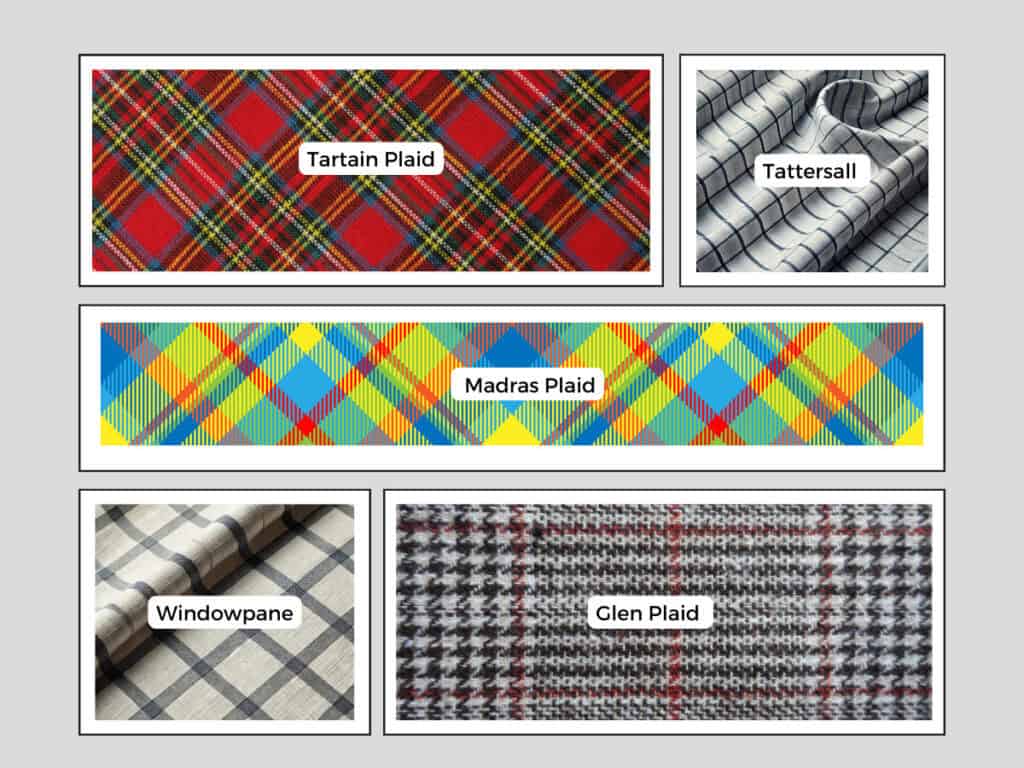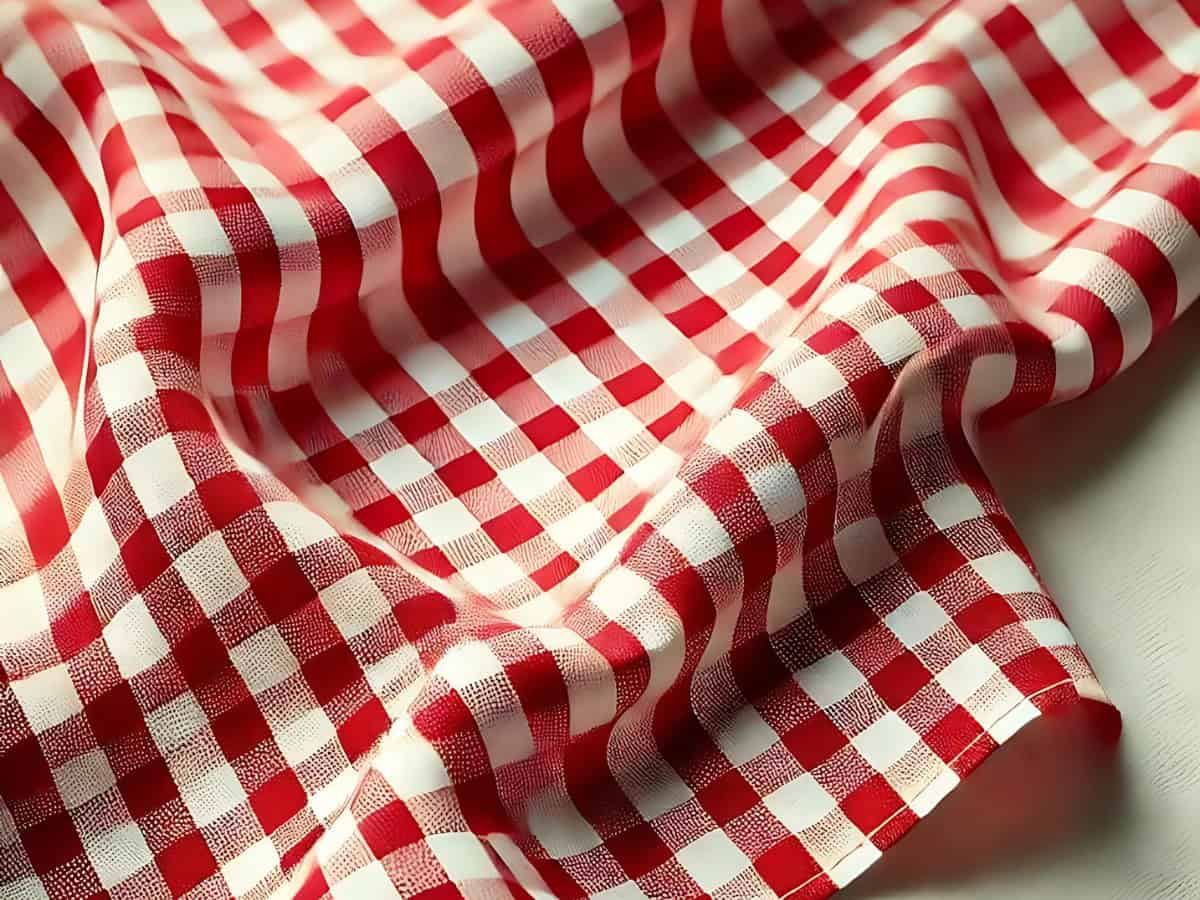Dining Table Decor: Gingham vs Checkered (and Buffalo Plaid)
Gingham vs checkered: two classic patterns that often confuse even the most style-savvy decorators. Ever wondered why some plaid patterns make you think of cozy cabins while others remind you of picnics in the park?
Plaid patterns are vast and varied, each adding its charm to our dining tables. Whether you’re setting up for a casual brunch or a formal dinner, understanding the difference between gingham, checkered patterns, and buffalo plaid is key to choosing the right design for your dining table decor.

In this article, we’ll explore these popular plaid patterns, their characteristics, and how to use them effectively in various dining settings. From casual gatherings to formal affairs, you’ll learn how to make plaid work for any occasion.
Understanding Plaid Patterns
Let’s dive into the unique characteristics of buffalo plaid, checks, and gingham. This will help you know the difference and choose the perfect pattern for your dining table.

1
Buffalo Plaid
- Style: Large, bold squares often in red and black
- Best Use: Statement placemats, runners
- Vibe: Cozy, rustic feel
- Season: Ideal for fall and winter
Buffalo plaid, also known as buffalo check, has a larger-scale pattern often using two colors, with black being a common choice. This bold design, originating from a red and black pattern worn by lumberjacks, has a rugged, outdoorsy feel.

2
Checkered (Checks)
- Style: Larger, bold squares in alternating colors, often black and white
- Best Use: Tablecloths, placemats, accent pieces
- Vibe: Classic, casual, rustic or farmhouse-inspired
- Season: Versatile; popular in fall and winter, adaptable year-round
Checks include both gingham and buffalo plaid but also encompass other types of plaid patterns:
Gingham
- Often used for casual tablecloths and napkins
- Popular in picnic-style or country-themed table settings
- Commonly seen in red and white or blue and white combinations
Buffalo Plaid
- Bold, large checks frequently used in rustic or cabin-style table settings
- Often seen in red and black, but also available in other color combinations
- Can be found on placemats, tablecloths, and napkins
Windowpane
- Elegant, widely spaced checks suitable for more formal table settings
- Often used in table linens for upscale dining experiences
Houndstooth
- Adds a sophisticated touch to table settings
- Commonly used for placemats or table runners in more modern or eclectic designs
Madras
- Colorful, often uneven checks that can add a vibrant touch to summer or casual table settings
- Works well for outdoor dining or themed events
Tattersall
- Subtle, evenly spaced thin lines forming small squares
- Can be used for napkins or placemats in preppy or traditional table settings
Scottish Tartan
- Complex patterns with multiple colors, often used for themed or holiday table settings
- Popular for Christmas or winter-themed tables

These check patterns can be incorporated into various table setting elements, including tablecloths, placemats, napkins, and even dinnerware. The choice of pattern can significantly influence the overall style and atmosphere of the table setting, ranging from casual and rustic to elegant and formal

3
Gingham
- Style: Small, even squares typically in white and another color
- Best Use: Casual tablecloths, napkins
- Vibe: Light, traditional touch, perfect for a country-style look
- Season: Shines in casual, summer settings
Gingham is a classic pattern with small checks, usually combining white with another color to create tiny squares. This design became popular in the early 1960s with colors like red, white, and blue.
| Pattern | Characteristics | Best Use in Dining |
|---|---|---|
| Gingham | Small checks, often white + another color | Casual tablecloths, napkins |
| Buffalo Plaid | Large checks, usually two colors | Statement placemats, runners |
| Tartan | Multicolor, traditional Scottish design | Formal dinner settings, holiday decor |
| Windowpane | Grid of large squares | Versatile, suits various styles |
| Houndstooth | Alternating dark and light threads | Formal dining |
| Graph Check | Thin lines forming small checks | Casual Dining |
Choosing the Right Pattern for Your Table Decor
When selecting a plaid tablecloth, consider the mood you want to create:
Formal Dinners
- Tartan Plaid: The Black Watch Tartan, with its deep and sophisticated colors, is perfect for elegant occasions.
- Glen Plaid: Offers a sophisticated and classic look, ideal for formal settings.
Casual Gatherings
- Gingham Plaid: With its small checks, gingham adds a cozy, timeless touch to any setting. Perfect for casual tablecloths and napkins.
- Madras Plaid: The colorful Madras plaid from India adds a vibrant, summer feel to your table.
- Graph Check: Thin lines forming small checks, perfect for casual dining with a clean and modern look.
Statement Pieces
- Buffalo Plaid: Large, bold squares often in red and black, ideal for statement placemats and runners.
- Windowpane: Intersecting lines forming a grid of squares, adding elegance without overwhelming the space.
Seasonal Decor
- Buffalo Plaid: Cozy, rustic feel, ideal for fall and winter.
- Gingham Plaid: Shines in casual, summer settings.
- Tartan Plaid: Perfect for holiday decor and formal dinner settings.
Mixing Patterns
Mixing patterns makes your table stand out. Try a plaid tablecloth with floral or striped napkins. High-contrast colors like black and white in Buffalo Check to grab attention. For a balanced look, mix big prints with small ones.
Think about your room’s style, the seasons, and pattern mixes to make your dining table stylish and welcoming. (FYI: buffalo check fabric costs between $30 to $150 per yard, depending on quality).
Styling Tips for Plaid Table Linens
I love using plaid table linens to add warmth and character to my dining space. Let’s explore some creative ways to style these versatile fabrics for your table.
Layered Look
A plaid table runner over a solid tablecloth creates a layered look that’s both elegant and cozy. This combination works well in many styles like contemporary and Scandinavian.
Casual Vibe
Use plaid napkins with solid placemats or vice versa.
Napkin Folding
A simple pocket fold showcases the pattern beautifully, while more intricate folds can add an extra wow factor to your table setting.
Seasonal Use
Buffalo plaid is popular in fall and winter, while lighter plaids are great for spring and summer.
Centerpiece Ideas
Keep it simple to avoid competing with the plaid pattern.
Incorporate natural elements like woven baskets or vases with woven fabrics to add texture to your design.
A clear glass vase with fresh flowers or a rustic wooden bowl filled with seasonal fruits can complement the plaid beautifully.
These simple decor elements enhance the table setting without overwhelming the eye, creating a balanced and inviting centerpiece.
Quick Table Setting Tips for Plaid Linens
Care and Maintenance of Plaid Tablecloths
Plaid tablecloths make any dining table look great. But, they need the right care to stay bright. Let’s look at some tips to keep your plaid linens looking new.
Washing and Ironing Techniques
Wash your plaid linens in cold water to stop them from fading. Use a soft detergent and a gentle cycle. Then, iron them on the right heat setting. Steam can help get rid of tough wrinkles.
Storing Your Plaid Linens
Storing your plaid tablecloths right is important. Fold them neatly or roll them to avoid deep folds. Keep them in a cool, dry spot away from sunlight to stop fading.
Treating Stains on Plaid Fabrics
Act fast to remove stains. Blot the stain, don’t rub it. Use a cleaner made for the fabric type. For hard stains, try vinegar and water before washing.
Remember, different plaid fabrics need different care. Always read the care label for the best way to iron and wash your plaid tablecloths.
| Stain Type | Treatment Method |
|---|---|
| Red Wine | Salt + Club Soda |
| Grease | Dish Soap + Warm Water |
| Coffee | White Vinegar + Cold Water |
My Final Thoughts
When it comes to gingham vs checkered patterns, and even buffalo plaid, each offers a unique charm for your dining table decor. These plaid patterns provide versatile and stylish options, whether you’re hosting a formal dinner, a casual gathering, or looking for a seasonal touch.
Understanding the distinctions between gingham, checkered designs, and buffalo plaid will help you choose the perfect pattern to enhance your table setting and tell a story of tradition and style. This knowledge ensures you select the ideal design that matches your event’s theme and ambiance perfectly, elevating your dining experience with the right plaid touch.
Scribble of the Day: Dinner Table Quote

I adore Buffalo Plaid and Gingham! Which of these patterns is your favorite? Share your thoughts and ideas in the comments below!






